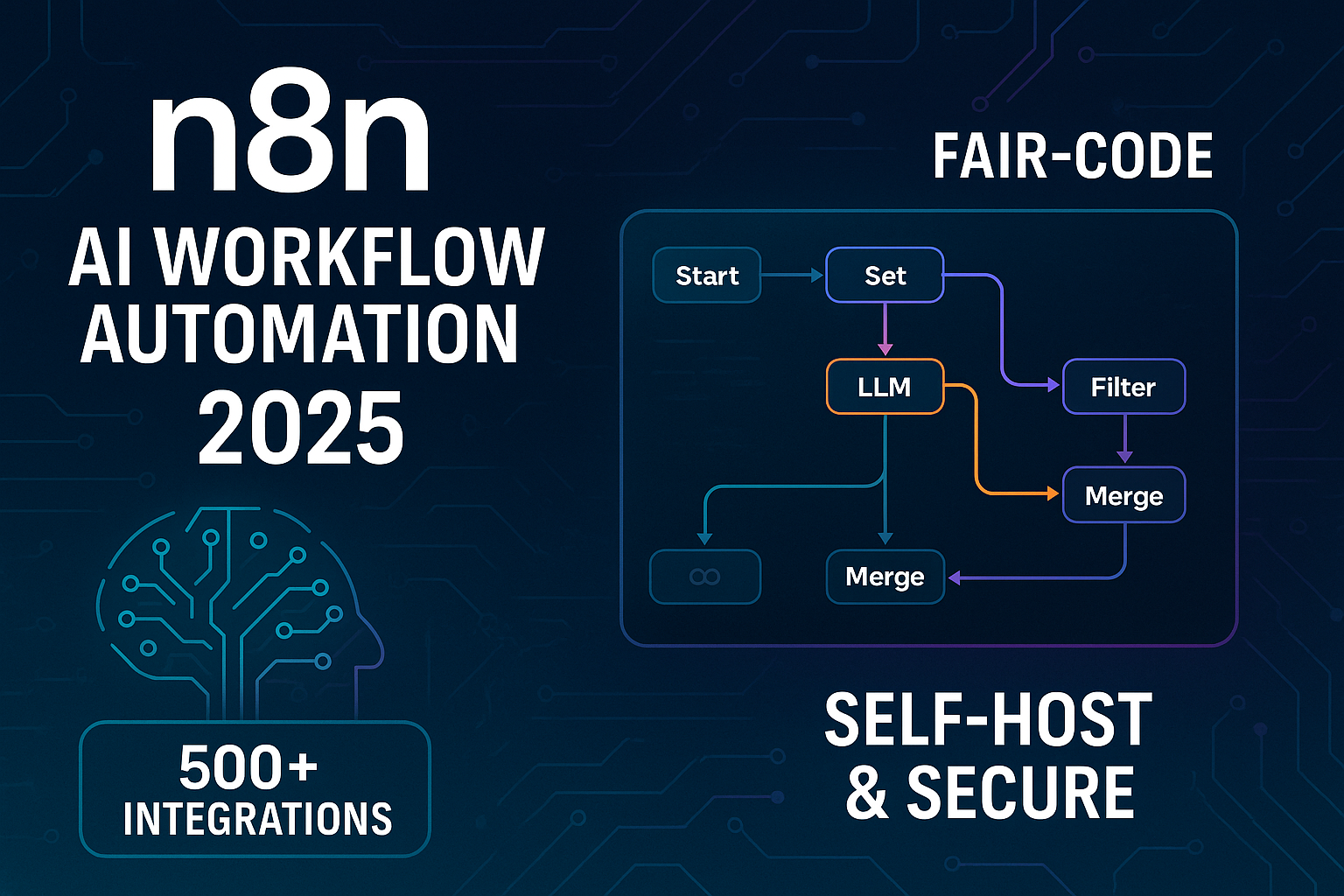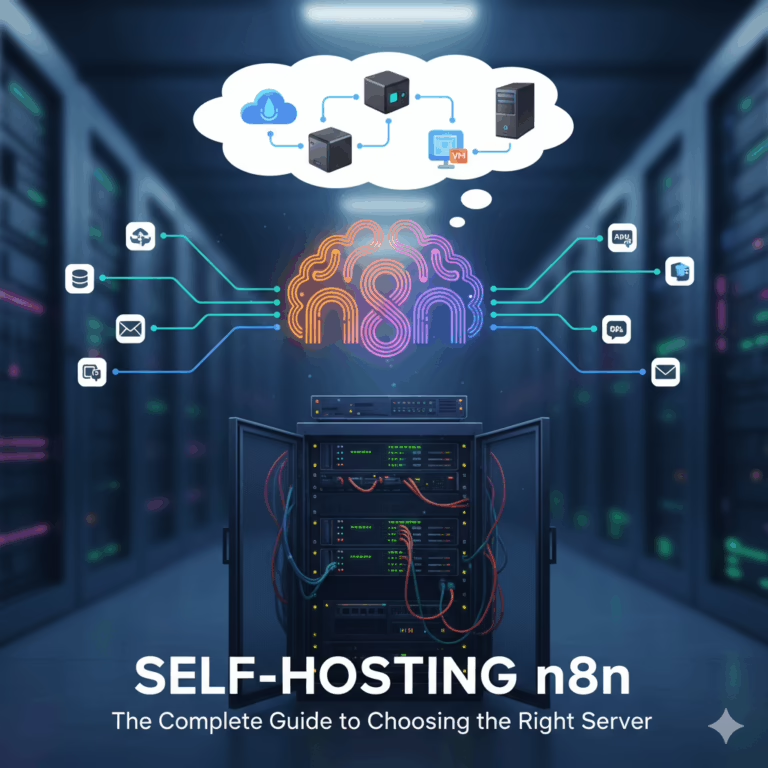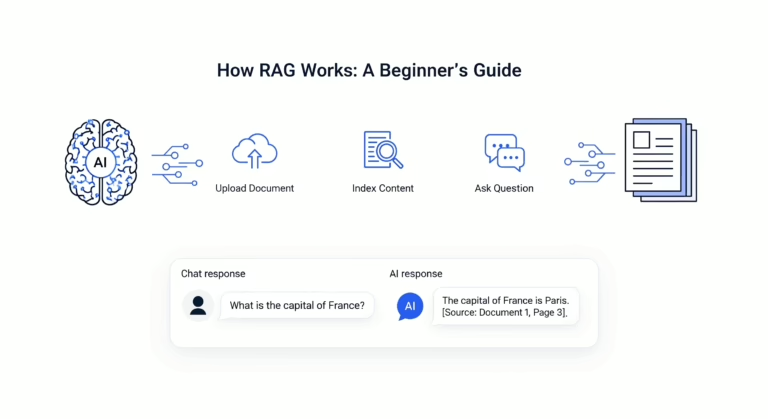In the rapidly evolving landscape of digital transformation, businesses face a critical challenge: how to harness the power of Artificial Intelligence (AI) in a practical, controlled, and integrated way. Many AI tools promise revolutionary outcomes but deliver isolated, fragile solutions that break down in production environments. The real business impact of AI will not come from standalone chatbots, but from AI workflow automation—seamlessly embedding intelligent agents into core business processes.
Enter n8n (pronounced “n-eight-n”), a platform that has emerged as a distinct and powerful player for technical teams and developers. As we look ahead to 2025, n8n is not just keeping pace but is defining the future of automation by combining a developer-centric approach with robust AI capabilities. Unlike tools that prioritize simplicity over control, n8n offers a unique blend of visual programming and custom code, allowing for the creation of sophisticated, multi-step AI agents that interact with your entire tech stack.
This article explores why n8n is positioned as the most powerful AI workflow automation platform for the coming year, detailing its core features, groundbreaking AI applications, and how it delivers tangible business value beyond the hype.
Table of Contents
What is n8n? A Paradigm Shift in Workflow Automation
n8n is a source-available workflow automation tool engineered for technical users, developers, and operations teams . Its core philosophy revolves around flexibility, extensibility, and user control. Fundamentally, n8n functions as an Integration Platform as a Service (iPaaS), enabling communication between hundreds of cloud applications and internal systems through APIs .
The name “n8n” is a nod to its architectural foundation. Often understood as a shortening of “nodemation,” it highlights the platform’s node-based visual editor . Users construct workflows, or sequences of automated steps, by dragging, dropping, and connecting nodes on a digital canvas. Each node represents a specific unit of work—such as a trigger event, an API call, a data transformation, or a logic operation . This node-based approach provides a granular level of control that is typically absent in more linear, simplified automation tools.
A key differentiator is n8n’s fair-code license . While not purely open-source, its source code is publicly accessible, granting users unprecedented transparency and the freedom to self-host the software on their own infrastructure. This is a critical consideration for organizations with stringent data privacy and security requirements .
Key Features That Make n8n Powerful for 2025
1. The Perfect Blend of Code and Visual Building
n8n successfully bridges the gap between no-code agility and code-level precision. While the visual editor allows for rapid workflow building, users can inject custom JavaScript or Python code directly into workflows using Function nodes . This means you are never limited by pre-built connectors; you can incorporate libraries from npm or PyPI to create any custom logic required . This hybrid approach ensures that workflows can start simple and evolve into highly complex, business-critical systems without switching platforms.
2. Unmatched Flexibility in Deployment
n8n offers two primary deployment paths, catering to different organizational needs :
- n8n Cloud: A fully-managed Software-as-a-Service (SaaS) offering where n8n handles all infrastructure, maintenance, and updates. This provides convenience and a fast start.
- Self-Hosted: The option to deploy n8n on your own servers, whether on-premises or on a cloud VPS. This model grants complete data sovereignty, is ideal for air-gapped environments, and can be more cost-effective for high-volume usage . The self-hosted “Community Edition” is free to use, with paid enterprise tiers adding advanced features like SSO and RBAC .
3. Extensive Integration Capabilities
With native integrations for over 500 applications and services—including Slack, Salesforce, Google Sheets, PostgreSQL, and Notion—n8n acts as the central nervous system for your digital tools . More importantly, its powerful HTTP Request node allows you to connect to any REST API, ensuring that even proprietary or niche systems can be integrated seamlessly . This future-proofs your automation investments.
4. Enterprise-Grade Security and Collaboration
For organizations scaling their automation efforts, n8n provides enterprise-ready features. These include Single Sign-On (SAML/LDAP), Role-Based Access Control (RBAC), audit logs, and version control via Git integration . These features ensure that automation can be rolled out reliably and securely across teams, much like code deployment .
n8n as an AI-Native Powerhouse for Building Intelligent Agents
n8n’s true power for 2025 lies in its advanced AI capabilities. It moves far beyond simple AI prompts, enabling the creation of dynamic, multi-step AI agents that can reason and take action.
Building Multi-Step AI Agents
n8n allows you to create agentic systems on a single visual canvas . You can integrate any Large Language Model (LLM) and chain it with other nodes to create intelligent workflows that, for example, analyze data, make decisions, and then execute actions in other apps like Salesforce or ServiceNow . This transforms AI from a passive question-answering tool into an active participant in your business processes.
Chat with Your Own Data
A common AI challenge is getting models to interact with proprietary information. n8n simplifies building Retrieval-Augmented Generation (RAG) systems . You can create workflows where employees ask questions in natural language via Slack, Teams, or other interfaces, and n8n queries your internal databases or documents to provide accurate, context-aware answers . This dramatically improves operational efficiency.
Self-Hosting AI Models for Maximum Control and Privacy
While n8n integrates with all major cloud-based LLMs (like OpenAI and Anthropic), a significant advantage is the ability to self-host AI models . This means you can run powerful AI workflows using local models like Llama or Mistral, ensuring that sensitive data never leaves your control. This is a paramount consideration for industries like healthcare and finance .
Practical AI Use Cases
The applications are vast. For instance, you can build workflows that:
- Automate SEO Analysis: Scrape competitor websites, analyze their title tags and meta descriptions, and use an LLM to generate optimized suggestions for your own content .
- Conduct Landing Page Roasts: Automatically analyze a landing page’s HTML and use an AI agent to provide a detailed CRO (Conversion Rate Optimization) audit with 10 actionable tips for improvement .
- Monitor Competitor SEO Changes: Schedule a workflow to regularly scrape competitor sites, track changes to their titles and meta descriptions, and alert your team via Slack if significant changes are detected .
n8n vs. The Competition: Why It Stands Out in 2025
To understand n8n’s position, it’s helpful to compare it to other major players in the automation space. The following table outlines the key differences that make n8n the preferred choice for technical teams.
| Feature/Aspect | n8n | Make.com (formerly Integromat) | Zapier |
|---|---|---|---|
| Primary Focus | Technical users, developers, complex logic | Balanced approach for technical and non-technical users | Ultimate ease of use for non-technical users |
| Code Integration | Native support for JavaScript/Python within workflows | Limited, primarily through pre-built modules | Very limited |
| Deployment | Cloud or Self-Hosted (free Community Edition) | Cloud-only | Cloud-only |
| Pricing Model | Based on workflow executions (cloud) | Based on operations (individual tasks) | Based on tasks and volume |
| AI Capabilities | Advanced, native multi-step AI agent building | Growing, but less granular control | Basic AI trigger/action integration |
As the table illustrates, n8n’s unique value proposition is its power and flexibility. It is designed for scenarios that require deep customization, complex logic, and complete data control . While tools like Zapier excel at simple, linear tasks, n8n is built to handle the intricate, branching workflows that define modern AI-driven automation.
Getting Started with n8n
Embarking on your n8n journey is straightforward. You can choose the path that best fits your technical expertise and requirements.
- Choose Your Deployment:
- Quick Start: Sign up for the n8n Cloud free trial to experiment with the platform without any setup .
- Full Control: Self-host using Docker. The Community Edition is free and offers unlimited executions, though you’ll need to manage the server infrastructure .
- Explore Templates: n8n offers a library of over 1,700 pre-built templates . These provide excellent starting points for common use cases, from sending notifications to building complex AI agents.
- Build Your First AI Workflow: Start with a simple goal. For example, create a workflow triggered by a schedule (Cron node) that fetches data from an API (HTTP Request node), processes it with a small piece of JavaScript (Function node), and sends a summary to a Slack channel (Slack node).
- Leverage the Community: n8n has a vibrant community and extensive documentation. Don’t hesitate to explore community-built nodes and seek help on forums as you build more complex automations.
Conclusion: Why n8n is Your Strategic Choice for 2025
As we move further into 2025, the businesses that will thrive are those that can effectively and reliably operationalize AI. n8n stands out as the most powerful platform for this task because it treats AI not as a magic bullet but as a integrable component within a broader, controllable automation framework.
Its unique combination of a visual builder and code-friendly environment ensures that you are never boxed in. Its commitment to data sovereignty through self-hosting options addresses critical security concerns. Most importantly, its native support for building sophisticated, multi-step AI agents provides a clear path to turning AI hype into tangible business value—from automating complex SEO tasks to creating intelligent customer service agents.
For developers, technical teams, and forward-thinking enterprises, n8n is more than just a tool; it is a strategic asset that empowers you to build the intelligent, automated workflows that will define the next generation of business efficiency.




